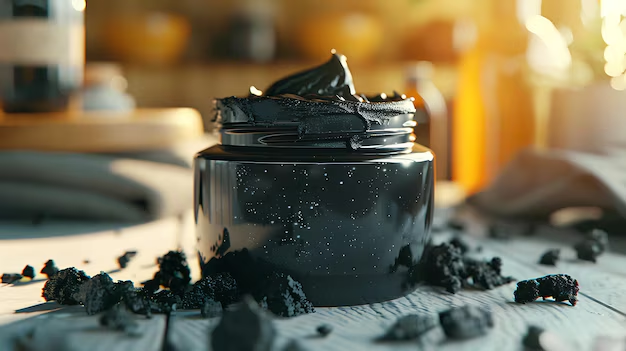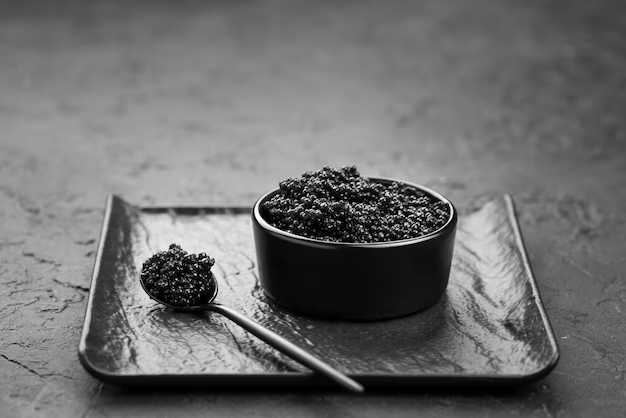The King Of Power House: An Overview – Shilajit
Shilajit The King of Sexual Power, is a natural substance primarily found in the Himalayas, renowned for its medicinal properties. Rich in fulvic acid and minerals, it enhances energy, stamina, and vitality. Key benefits include improved cognitive function, anti-aging effects, and support for male fertility. It is also used to manage chronic fatigue, boost immunity, and promote joint health.
Scientifically, studies suggest its effectiveness in reducing oxidative stress and enhancing mitochondrial function. While generally safe, quality and dosage are crucial for efficacy. Importance: it serves as a potent adaptogen and rejuvenator in traditional and modern medicine, backed by emerging scientific validation.
Table of Contents
Shilajit – Exploring the Ancient Elixir of the Mountains in Depth

Have you ever encountered a substance that seems to hold the very essence of the Earth’s power and wisdom, a material that has been revered for millennia for its potent and diverse properties?
I’m referring to it , an extraordinary natural resin that seeps from the cracks and fissures of high-altitude mountain ranges. especially in the Himalayas, and which has long fascinated cultures with its history of traditional uses, which are now also being investigated by modern scientific study.
In this expanded blog post, we’ll embark on a deep and comprehensive exploration of it . We will investigate its geological origins, its rich historical roots in traditional medicine, the scientific understanding of its composition and mechanisms of action, the myriad potential benefits it holds, and crucially, the precautions and contraindications to be aware of.
The Geological Marvel: Unraveling the Origins
it is not a plant, mineral, or animal product; rather, it’s a complex, organic substance—a mineral pitch that is exuded from cracks in rocks within mountainous regions, with the Himalayas being a prime location. It forms over centuries through the gradual decomposition of plant and microbial matter.
The combined effects of rock pressure, climate variations, and microbial action break down organic materials, causing this mixture to ooze out as a sticky, tar-like resin from cracks in the rocks. The quality, composition, and potency of it vary significantly depending on the specific location, altitude, rock type, and flora present in the region. The many factors of its unique formation give it a very complex chemical and bioactive makeup.
it’s appearance can vary depending on its source and the level of processing it has undergone. Typically, raw form of it is sticky, tar-like resin, ranging from dark brown to black, but after processing, it may be available in a powdered, capsule, or liquid form. This substance is collected from very remote, high-altitude regions, and it requires an arduous and specialized procedure to access it.
A Historical Legacy: Shilajit in Traditional Practices
its use spans thousands of years and is deeply entrenched in traditional systems of medicine, particularly in Ayurveda. Ancient Sanskrit texts mention it is as a powerful and sacred substance, often referred to as a rasayana, which translates to a rejuvenating and longevity-promoting material.
It was considered a precious substance, used by royalty and the elite for its association with strength, wellness, and vitality. It also has a history of use in other traditional medicine systems throughout Central Asia and parts of Russia.
Traditional Applications: A Time-Honored Approach
it has been utilized traditionally for a wide array of applications in Ayurveda, focusing mainly on overall well-being:
- Rejuvenation and Longevity: it has been revered for its ability to enhance vitality, reduce fatigue, and promote longevity.
- Energy and Stamina: It’s traditionally used to enhance physical energy, stamina, and strength, and to reduce chronic fatigue.
- Cognitive Enhancement: It has been used to enhance memory, focus, concentration, and overall cognitive functions.
- Libido and Sexual Function: Used traditionally to improve sexual health, fertility, and overall reproductive function in both men and women.
- Immune System Support: Traditionally employed to boost and strengthen the immune system and help to fight off infections.
- Anti-inflammatory Properties: It has been traditionally used as a natural anti-inflammatory remedy.
- Bone and Joint Health: Used to promote bone strength, reduce joint pain, and improve mobility.
Scientific and Ayurvedic Research: Evidence of Shilajit
Scientific Research: Modern scientific investigation into it has been growing, attempting to validate and understand its traditional uses. Some key findings of modern research are:
- Bioactive Compounds: Studies have identified a wide range of bioactive compounds present in it , particularly fulvic acid and humic acid, as well as dibenzo-α-pyrones and various trace elements. Research has shown that these compounds have antioxidant, anti-inflammatory, and anti-microbial properties.
- Cellular Protection: It has been shown to protect cells from damage caused by oxidative stress, a key factor in many chronic diseases and the aging process.
- Mitochondrial Function: Research is exploring it’s potential to improve mitochondrial function, which is the production of cellular energy and a very important mechanism for overall vitality.
- Anti-Viral Activity: Some studies have shown potential anti-viral properties of it and are beginning to look at how it could be used to combat viral infections, but much more work is needed.
- Neuroprotective Potential: Some research has also investigated its ability to protect the nervous system and brain.
Ayurvedic Insights: In Ayurveda, it is classified as a rasayana due to its purported rejuvenative and restorative properties, and is often used as a foundational element in treatment plans:
- Tridoshic Balancing: In Ayurveda, it is considered to help balance all three doshas (Vata, Pitta, and Kapha), which relate to overall energy and bodily function.
- Ojas and Bala: It is believed to increase Ojas (vitality, immunity, and strength) and Bala (physical strength)
- Adaptogenic: It helps the body adapt to and cope with physical, mental, and emotional stressors.
- Rejuvenative and Aphrodisiac: In traditional use, it’s used to promote fertility, longevity, and overall health.
- Digestive Aid: Used to improve digestion and nutrient assimilation.
- Used to enhance the therapeutic effects of other herbs: In Ayurvedic medicine, it is used to promote the efficacy of other medicines in treatment plans.
Top 15 Potential Benefits and Traditional Uses of Shilajit

- Enhanced Energy and Reduced Fatigue: Improves overall energy and helps to combat fatigue.
- Improved Cognitive Function: Enhances memory, focus, and clarity of thought.
- Potent Anti-Aging Effects: Protects cells from damage and promotes overall cellular health.
- Strengthened Immune System: Modulates the immune system and enhances the body’s ability to fight off infections.
- Powerful Anti-inflammatory: Reduces inflammation and pain associated with inflammatory conditions.
- Improved Nutrient Absorption: Fulvic acid in it improves the uptake and absorption of nutrients.
- Enhanced Libido and Sexual Health: Used to improve sexual function and fertility in both men and women.
- Cardiovascular Health Support: Promotes heart health, blood circulation, and healthy blood pressure levels.
- Bone and Joint Support: Improves bone mineral density, reduces joint pain, and improves mobility.
- Blood Sugar Regulation: May help improve insulin function and regulate blood glucose levels.
- Altitude Sickness Relief: Used to help the body adapt to the changes that occur at higher elevations.
- Wound Healing: Speeds up the healing of wounds, cuts, and damaged tissues.
- Detoxification Support: May help to cleanse the body of heavy metals and other toxins.
- Stress Reduction: Helps the body to adapt and cope with physical, emotional, and mental stress.
- Improved Physical Performance: Supports muscle recovery, reduces fatigue, and increases endurance and strength.
You Need to Know: Top 10 Chemical Components of Shilajit

Chemical Components
| Component | Details | Notes |
| Fulvic Acid | Dibenzo-alpha-pyrones, organic acids, with complex humic-like compounds | Primary bioactive compound, antioxidant, enhances nutrient absorption. |
| Humic Acid | Complex mixture of organic acids and polymers | Another key bioactive compound; has gut health benefits and antioxidant effects. |
| Dibenzo-α-pyrones (DBPs) | Specific to it , various derivatives | Unique to it , known for antioxidant, anti-aging, and energy-boosting effects. |
| Minerals (Ionic Form) | Calcium, Magnesium, Iron, Zinc, Manganese, Copper, etc | Essential for many bodily functions; ionic forms are more easily absorbed. |
| Amino Acids | Essential and non-essential amino acids | Building blocks of proteins and vital for tissue repair, hormone production, and overall health. |
| Benzoic Acid | A simple monocarboxylic aromatic acid | Has antifungal activity. |
| Triterpenes | A large group of chemicals from plants | Have potent anti-inflammatory and antioxidant effects. |
| Gallic Acid | A type of phenolic acid | Has strong anti-oxidant properties. |
| Coumarins | A type of aromatic compound | Has anti-inflammatory and anti-oxidant properties. |
| Phenols | A very large group of organic compounds | Very potent anti-oxidant compounds. |
Gender-Specific Uses of It(Traditional and Emerging Data)

- Men: it is most often associated with men’s health, where it has been used traditionally to boost libido and fertility, improve sexual function, enhance muscle mass, improve strength, and increase overall energy. More scientific studies are still needed to fully back these claims.
- Women: it has been traditionally used to help women’s hormonal balance and reproductive health, helping to alleviate menstrual issues and menopausal symptoms. It has also been used for its energy-boosting effects, helping to combat fatigue. However, more research is needed to fully understand its impact on women.
When to Exercise Caution: Situations to Avoid its Consumption
While it is generally considered safe for most when consumed in recommended amounts, there are some very important contraindications:
- Pregnancy and Breastfeeding: Due to a lack of research, it’s best to avoid it during pregnancy and breastfeeding.
- Kidney Conditions: Individuals with kidney disease or other related conditions should avoid it due to its mineral content and potential stress on the kidneys.
- Heart Issues: People with existing heart conditions or high blood pressure should consult their doctor before using it due to its potential cardiovascular impacts.
- Allergies: A rare allergy to it is possible. Stop use immediately if any allergic reaction occurs.
- Excessive Iron: Avoid use if you have issues with iron overload due to the iron content in it .
- Medication Interactions: it may interact with certain prescription drugs; always consult your doctor if you are taking other medications.
- Children: It’s not recommended for children to consume it, because of their smaller body size.
- Low Blood Pressure: it may lower blood pressure, so people with low blood pressure should be extremely careful.
- Unprocessed: Never use raw, unprocessed it , as it may contain dangerous contaminants; choose only high-quality, reputable sources.
- Autoimmune disorders May exacerbate autoimmune disorders.
- Hormone-Sensitive Conditions Since it may influence hormone levels, it is important to be cautious for individuals with hormone-sensitive conditions
Important Note: Always prioritize sourcing high-quality, purified it from reputable suppliers. Consult a healthcare professional before starting any new supplement, especially if you have any pre-existing conditions or are taking medication.
Conclusion:
it stands as a testament to the power and wisdom of nature, a substance with a history that stretches back thousands of years. From its roots in traditional medicine to the scientific investigation of its complex chemical composition, it continues to intrigue and inspire us. It has many traditional uses, and a growing body of evidence to support some of them. With responsible use and a mindful approach, it holds the potential for powerful benefits.
Call to Action:
Have you ever explored the wonders of it , or do you have any personal experiences to share? Please leave a comment and join in on the conversation below. Please also feel free to share any educational resources about this powerful and ancient material.
Shilajit: Quickly Know
- What is Shilajit used for?
it is used for enhancing energy, stamina, cognitive function, and supporting overall vitality. It also aids in joint health, immunity, and fertility. - What happens if we take Shilajit daily?
Daily use can boost energy, reduce fatigue, enhance focus, and improve overall health. However, excessive consumption may cause side effects. - Can females take Shilajit?
Yes, females can take it for hormonal balance, energy, and anti-aging benefits. - Is Shilajit safe for men?
Yes, it is safe for men and supports male reproductive health, vitality, and endurance. - Who should avoid Shilajit?
People with certain medical conditions (e.g., low blood pressure, severe heart problems) or allergies to it should avoid it.
Product and Dosage
- Which Shilajit is best?
Pure, resin-based it sourced from trusted brands is considered the best. - How much Shilajit per day?
The recommended dosage is typically 300–500 mg daily, as advised by a healthcare provider. - What is Shilajit’s taste like?
it has an earthy, bitter taste. - How to eat Shilajit paste?
Mix a small amount in warm water, milk, or tea and consume. - Is Patanjali or Dabur Shilajit pure?
Purity varies by batch; look for third-party certification for assurance.
Age, Gender, and Special Considerations
- Can a 16-year-old have Shilajit?
it is generally recommended for adults; consult a doctor before use in teenagers. - Can a 70-year-old take Shilajit?
Yes, older adults can take Shilajit for energy and anti-aging benefits with medical advice. - Can I take Shilajit on my period?
Yes, it can help with energy and hormonal balance during menstruation.
Timing and Combinations
- Can I take Shilajit before bed?
Yes, it may support recovery and restful sleep for some individuals. - Can I take Shilajit and Viagra together?
Consult a healthcare provider, as combining them may affect blood pressure. - Can I drink milk after taking Viagra?
Yes, but it’s better to follow dietary recommendations provided with Viagra.
Side Effects and Risks
- What are the side effects of Shilajit?
Possible side effects include dizziness, nausea, or allergic reactions when taken in excess or low-quality forms. - Is Shilajit safe for kidneys?
Generally, yes, but people with kidney disorders should consult a doctor. - Does Shilajit gain weight?
No, it promotes balanced energy, which may support weight management.
Miscellaneous
- Where is Shilajit found?
it is primarily sourced from the Himalayan, Altai, and Caucasus mountain ranges. - Is Shilajit allowed on international flights?
Yes, but ensure it is within legal quantities and properly labeled. - What is the English name of Shilajit?
it is often referred to as “Mineral Pitch” or “Black Asphaltum” in English. - Are Ashwagandha and Shilajit the same?
No, Ashwagandha is an adaptogenic herb, while Shilajit is a mineral-rich resin. - Who needs Shilajit?
Individuals seeking enhanced energy, stamina, and vitality can benefit from Shilajit. - Which fruit is best for a strong penis?
Fruits like watermelon, bananas, and pomegranate support blood flow and vitality.
General Uses and Safety
- What is Shilajit used for?
it is used for enhancing energy, stamina, cognitive function, and supporting overall vitality. It also aids in joint health, immunity, and fertility. - What happens if we take Shilajit daily?
Daily use can boost energy, reduce fatigue, enhance focus, and improve overall health. However, excessive consumption may cause side effects. - Can females take Shilajit?
Yes, it can take it for hormonal balance, energy, and anti-aging benefits. - Is Shilajit safe for men?
Yes, it is safe for men and supports male reproductive health, vitality, and endurance. - Who should avoid Shilajit?
People with certain medical conditions (e.g., low blood pressure, severe heart problems) or allergies to it should avoid it.
Product and Dosage
- Which Shilajit is best?
Pure, resin-based it sourced from trusted brands is considered the best. - How much Shilajit per day?
The recommended dosage is typically 300–500 mg daily, as advised by a healthcare provider. - What is Shilajit’s taste like?
it has an earthy, bitter taste. - How to eat Shilajit paste?
Mix a small amount in warm water, milk, or tea and consume. - Is Patanjali or Dabur Shilajit pure?
Purity varies by batch; look for third-party certification for assurance.
Age, Gender, and Special Considerations
- Can a 16-year-old have Shilajit?
it is generally recommended for adults; consult a doctor before use in teenagers. - Can a 70-year-old take Shilajit?
Yes, older adults can take it for energy and anti-aging benefits with medical advice. - Can I take Shilajit on my period?
Yes, it can help with energy and hormonal balance during menstruation.
Timing and Combinations
- Can I take Shilajit before bed?
Yes, it may support recovery and restful sleep for some individuals. - Can I take Shilajit and Viagra together?
Consult a healthcare provider, as combining them may affect blood pressure. - Can I drink milk after taking Viagra?
Yes, but it’s better to follow dietary recommendations provided with Viagra.
Side Effects and Risks
- What are the side effects of Shilajit?
Possible side effects include dizziness, nausea, or allergic reactions when taken in excess or low-quality forms. - Is Shilajit safe for kidneys?
Generally, yes, but people with kidney disorders should consult a doctor. - Does Shilajit gain weight?
No, it promotes balanced energy, which may support weight management.
Miscellaneous
- Where is Shilajit found?
it is primarily sourced from the Himalayan, Altai, and Caucasus mountain ranges. - Is Shilajit allowed on international flights?
Yes, but ensure it is within legal quantities and properly labeled. - What is the English name of Shilajit?
it is often referred to as “Mineral Pitch” or “Black Asphaltum” in English. - Are Ashwagandha and Shilajit the same?
No, Ashwagandha is an adaptogenic herb, while it is a mineral-rich resin. - Who needs Shilajit?
Individuals seeking enhanced energy, stamina, and vitality can benefit from it . - Which fruit is best for a strong penis?
Fruits like watermelon, bananas, and pomegranate support blood flow and vitality.
